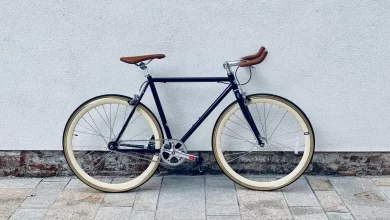Everyone is aware of what happens in toilets, and we don’t necessarily want to watch it. In fact, a disorganized one can frequently convince you that you don’t actually need to use the restroom. Toilet use is essential to the survival and development of people all around the globe, as exposure to human waste causes diseases such as diarrhea and some other deadly diseases as well.
- The other meaning of toilet is described as the act or process of dressing and grooming oneself.
- The world’s first known urban sanitation systems can be found in the Indus Valley civilization, which is located in northwest India and Pakistan. Around 2800 BC, toilets were placed onto the outside walls of homes in the Mohenjo-Daro Civilization. These toilets had vertical chutes that allowed waste to be dumped into cesspools or public drains.
- Although the flush toilet was created in 1596 but was not widely used until 1851. Before it, there were various chamber pots, communal outhouses, and holes in the ground used as the “toilet.”
- Although the paper was generally available by the 15th century, it wasn’t until 1857 that modern, commercial toilet paper first appeared in the Western world.
- Thomas Crapper, a London-based plumbing magnate, created one of the first flush toilet lines that were commercially successful in the late 19th century. Crapper didn’t create the toilet, but he did create the ballcock, a more effective tank-filling system that is still in use today.
- Ceramics (porcelain), concrete, plastic, and wood are the most common materials used to make toilets. Dual flushing, low flushing, toilet seat warming, self-cleaning, female urinals, and waterless urinals are examples of newer toilet technologies.
- Iceland has the highest public toilet density, with 56 facilities per 100 000 people. Switzerland comes in the 2nd spot, and New Zealand comes in the third spot in terms of public convenience.
- The country that has the highest public toilet cleanliness is Singapore, with an average cleanliness rating of 4.04. The nation that comes in the 2nd spot is Germany (3.93), and in the 3rd position is Japan (3.69).
- There are mainly three types of toilets
· Wall Hung toilets.
· Close Coupled toilets.
· Back To Wall toilets. - There are also three types of toilets according to shape, which are
• Japanese type
• Western type
• Multifunction - TOTO is the world’s biggest toilet manufacturer and was founded in 1917. The company is based in Kitakyushu, Japan, and owns production facilities in nine countries. The name “Toto” is an abbreviation of the two Japanese words forming its full name as Tōyō Tōki meaning oriental ceramics.
- The most expensive toilet is not on the land but in the space. The astronaut toilet present on the International Space Station is the most expensive toilet produced and cost Nasa around ($23 million). The cost got so high because of its capabilities to recycle and use in Zero Gravity.
- Coming Back to earth, the most expensive toilet on land is the Hang Fung Gold Toilet, that is worth $5 million. The toilet, as well as the bathroom, is entirely made of Gold and is only for viewing purposes.
- According to a 2020 report, approximately 54% of the world’s population (4.5 billion people) used a safe sanitation service or toilets. The rest of the people continue to lack access to basic sanitation services such as private toilets and latrines.
- Out of the world’s seven billion people, six billion have access to mobile devices, and only 4.5 billion of the world’s total population has access to toilets.
- Central African countries are the most affected by the disease of diarrhea. Around 186.48 people out one lakh people suffer from this deadly disease which happens due to poor or no sanitation services. Lesotho and Somalia are the second and third most affected countries on the globe.
- Ethiopia, the second most populated country in the African continent, is the country that lacks in toilets the most. Ninety-three percent of the population lacks a safe lavatory and usually defecates in open or unsafe lavatory.
- The Woodbridge Bath B0950S is one of the most affordable and features a full smart toilet. The toilet seat has a variety of features like an adjustable bidet; users can control the position, water temperature, and water pressure.
- Chongqing, China, claims to have the world’s largest public toilet facility. The public toilet has about 1,000 toilets spread across four stories.
- Columbus, Indiana, has the world’s biggest toilet seat, which is present in a child museum. The toilet is a part of the ExploraHouse exhibit, which enables kids literally crawl through the walls, tubes, and internal workings of a home. The toilet is a slide that carries children through the pipes.
- According to a research, it has been revealed that smartphone screens have more germs than a toilet seat. A toilet seat has only 50 bacteria per square inch, and a smartphone screen has 17000 bacteria per square inch.
- The two bacteria that were most and least prevalent in toilet indoor handles were E. coli (28.5%) and Klebsiella (1.51%).
- E. coli was the most prevalent (28.54%), while Pseudomonas was the least (1.32%) prevalent on toilet exterior handles.
- The toilet built earlier before 1982 used to consume about 5 to 7 gallons of water per flush. These days we have started conserving water, and around 1.6 gallons of water is used per flush.
- The UN General Assembly declared World Toilet Day an official UN day. The day was first celebrated on 19 November 2001, and the same is celebrated every year.
- There is also a World Toilet Organization which is a global non-profit organization committed to improving toilet and sanitation conditions worldwide.






